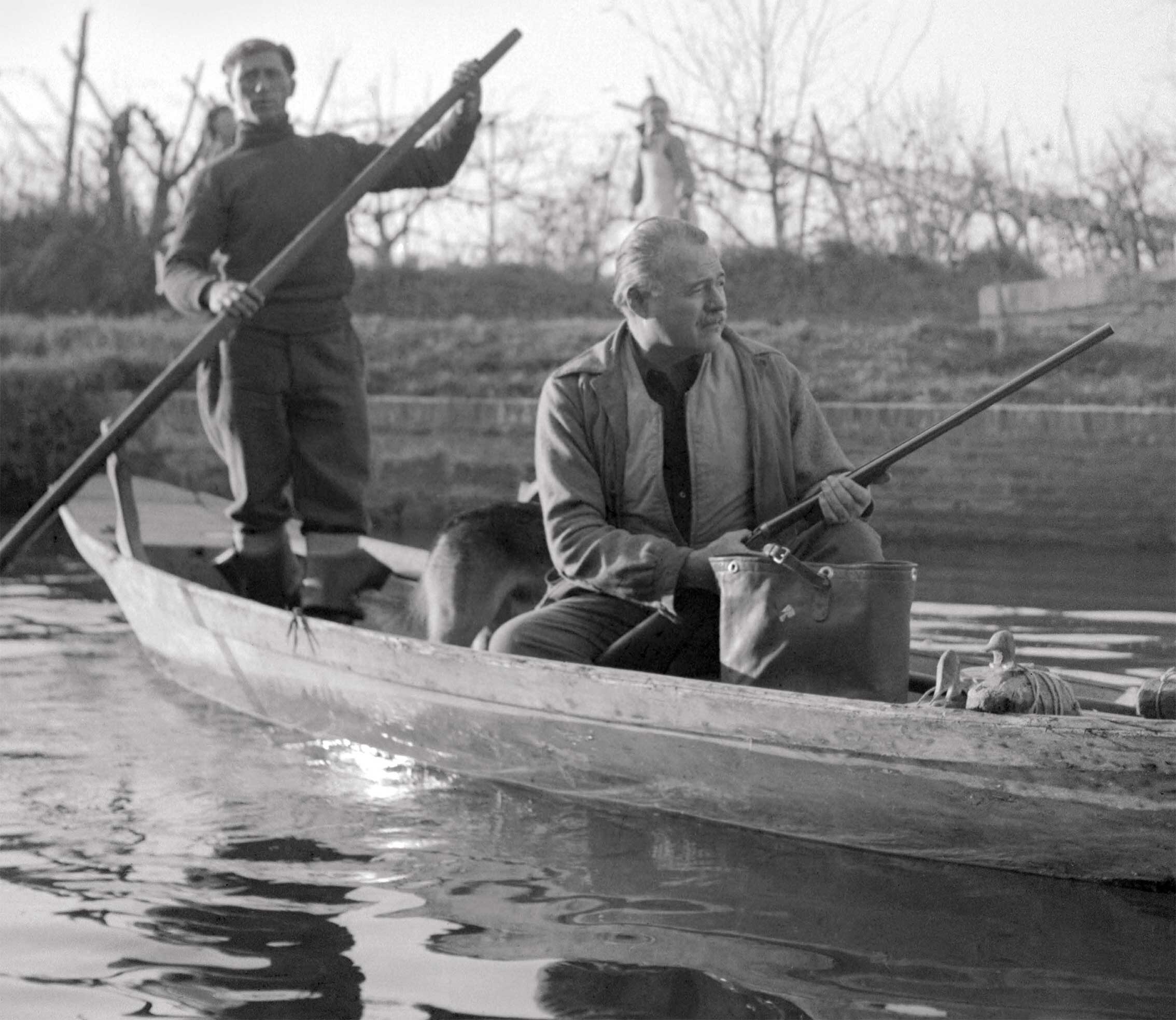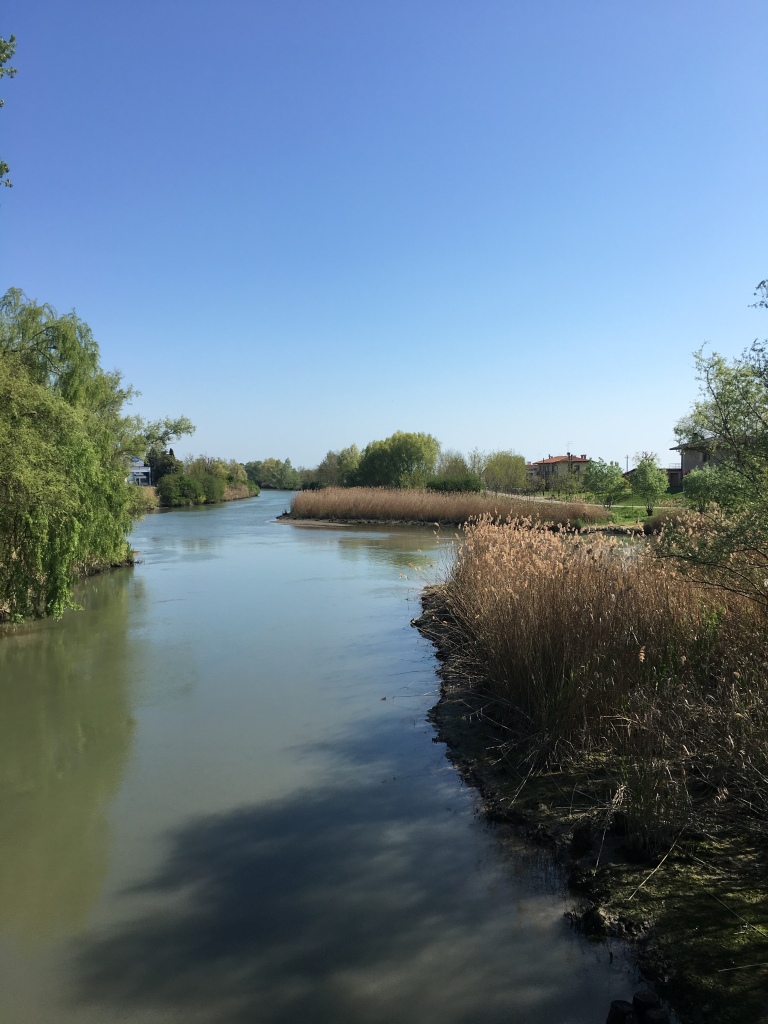The trick is to get up before dawn, ideally in the small hours, and to head out onto the lagoon when it’s still pitch black. All the locals will tell you that you’ve got to be ready, all set up, before the first hint of daylight. At this time the lagoon is quiet, water laps gently against the wooden hull of the boat. There’s a luxurious feeling of silence and emptiness.
The boatman purses his lips, he has a very slightly surly manner. He guides the skiff through the murky waters with minimal effort. In the distance a small beam of light comes from the torch of a fellow hunter. Imperceptibly dawn is coming as a smudge of orange brightens the eastern horizon. The reeds rustle as a breathe of air gently caresses their stiff, broad stems. Carefully the guns are loaded and readied for action.
This is the last time I’ll be out here, he thinks to himself. He reaches deep into his canvas bag and grabs a battered metal flask, he unscrews the lid and takes a large swig. The liquid courses through his veins and into his stomach. He feels better, more relaxed. He looks up at the sky and as his eyes become accustomed to the gentle predawn light, he makes out a group of birds, in flight, making their way towards him. He raises his head, seizes the gun, and watches. The birds are getting closer and closer, now they are directly overhead. He squeezes the trigger and fires, twice in quick succession. Then silence, and smoke and a ringing in his ears. A flopping sound and a splash shows the boatman where the duck has fallen. He scoops it up with a crudely fashioned hook. A second body bobs on the water, a few feet away. The hunter reloads and fires. Again the ringing, smoking and silence. The boatman is muttering to himself, he is ignored.
As the burnished orb of the sun lifts itself above the horizon there’s a pile of feathered carcasses in the bottom of the boat. He takes another swig from the flask. He offers it to the boatman, who accepts and takes a forceful gulp. He gives the signal to return. Effortlessly the boat moves back into the channel. Ahead is the leaning bell tower of Burano and to port is the rectangular, blocky outline of Santa Maria Assunta. The boat makes its way to the small canal that leads to Ponte del Diavolo. At the end is a mooring for the ‘locanda’. He’ll be having breakfast there; coffee, eggs, ham. That’s a proper breakfast he thought. He wondered if it would be his last.




Mini-bio:
- Ernest Hemingway volunteered in the First World War, he was an ambulance driver. He was active at the front between the Austrians and the Italians. He was wounded in action.
- During the First World War he absorbed the landscape and history of Venice and the lagoon of Venice. He discovered the great rivers of the Veneto region; Piave, Sile, Tagliamento. First as battlegrounds, later as place to hunt. He was friendly with various Italian aristocrats, who welcomed him into their world of hunting & shooting.
Two of his novels are set in and around Venice:
- A Farewell to Arms
- Across the river and into the trees
- Both novels evoke the haunting beauty of the Venetian Lagoon, with its mists and mystery. He writes of life, love, courage and honour with great emotional elegance.
- To discover more about Torcello – Hemingway’s favourite base in the lagoon check out my article – Torcello – Island of legends – Cipriani, Hemingway, Venice
- The nearby island of Burano hosted Hemingway for lunch at Da Romano – my favourite trattoria.
- Hemingway loved a drink and was a regular at Harry’s Bar. The eponymous bar founded by Arrigo Cipriani. The bar still exists today!
- The Gritti Palace Hotel was Hemingway’s preferred lodging in Venice. It is beautifully located on the Grand Canal. At Film Festival time it is the perfect place for people watching! It’s also great for yoga on the roof terrace.
- Hemingway’s descriptive powers are impressive. He describes an individual as having, ‘a face like a white sole fish, 30 hours dead at the market’.
- Hemingway describes the ‘Veneziani’ as loyal, hard working and brave.
- For more on the lagoon and the artists who came here: The Art of Da Romano Venice is an article about a wonderful restaurant, on the nearby island of Burano and the fabulous art that lines it’s walls.
- For tailor-made tours of Venice and the lagoon contact me: janet@grand-tourist.com for a day or two days or a week including Venice, Lagoon and numerous other places of interest in Italy
The Veneto is my favourite region of Italy – for more on the Veneto explore my blog: www.greyhoundtrainers.com
- Written: January, 2018
- Revised: March, 2021 / April, 2022


Did you know that Ernest Hemingway’s family vacationed in Walloon Lake, Michigan about 30 miles south of where I live? They have a Hemingway Festival every summer.
LikeLiked by 1 person
I did not know that – how interesting!
LikeLike
Reading this for a second time with a different perspective. Wonder why the boatman was so ticked off? Was it just his nature or something that E.H. did or said to him that set him off? Also wondering how long E.H. had been contemplating taking his own life.
LikeLiked by 1 person
Both great questions MLP – I think EH was a very all or nothing sort of man. When he went duck hunting he was ruthless. They took decoys (fake ducks) to attract the birds and then shot them in large numbers (far more than they needed).
The boatman in my imagined piece would have been ticked off for being forced to be out on the lagoon so early in the morning (before dawn), also it was probably very cold.
LikeLiked by 1 person